Last-Minute NYC Holiday Gift Guide 🎁
We’ve created a holiday gift guide with presents for the intrepid New Yorker that should arrive just in time—

We highlight the NYC sites identified by a Brooklyn writer in his book, "Where Was the Room Where It Happened?"!

With the 10th anniversary of Hamilton this week, we're revisiting a 2016 article on the real New York City locations that appear in the hit Broadway musical (a piece updated when the taped version came out on Disney+ in 2020).
A few of the locations are mentioned explicitly in the show, but many are not. With help from New York City-based writer B.L. Barreras, who wrote the self-published book Where Was the Room Where It Happened? The Unofficial Hamilton: An American Musical Location Guide, this guide offers expanded information on locations included in Hamilton.
In the book, Barreras breaks down the type of locations into places that were the setting for scenes, places mentioned in lyrics, and places that were the location for events in the show, but may have been shown differently. Barreras also acknowledges that Lin-Manuel Miranda had to take some liberties due to the constraints of set making and show flow on a physical stage, and that the book is not intended to point out such differences.
The book is divided into six chapters: locations in New York City, other locations of note connected to Alexander Hamilton in the city, Hamilton-related things to do in the city, Hamilton locations in New Jersey, Hamilton locations elsewhere (like Philadelphia, Albany, Yorktown, even England), and suggested itineraries to take it all in. For Aaron Burr fans, there’s an itinerary devoted just to him.
Barreras has kindly provided us with the highlights of the Hamilton locations from his book, which we’ve excerpted. So without further ado, here are 10 notable locations from the musical!
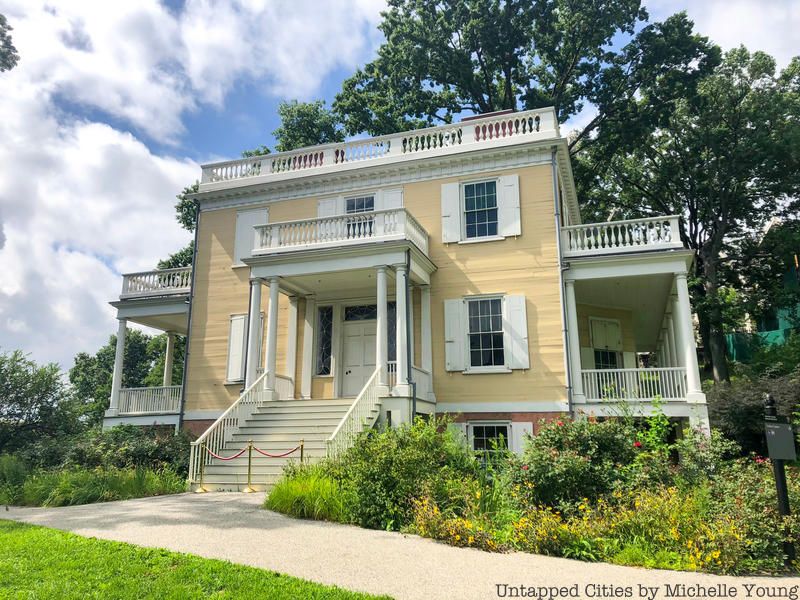
The Hamiltons were living on the property where the Grange was to be located when Philip Hamilton was killed in his duel (although the Grange itself was still under construction at the time). Alexander Hamilton speaks with Philip before his duel in “Blow Us All Away,” and Hamilton and Eliza would have taken solace there as sung in “It’s Quiet Uptown.” Eliza would have been at the Grange the morning of Hamilton’s duel with Aaron Burr and would have spoken to him there in “Best of Wives and Best of Women.” Eliza lived at the Grange for a time after Hamilton’s death while she started working on telling his story in “Who Lives, Who Dies, Who Tells Your Story.”
Fun fact: The Hamilton Grange was actually moved twice, most recently from 2006 to 2011 to this spot in St. Nicholas Park.In non -pandemic times, Hamilton Grange is operated by the National Park Service. Untapped New York Insiders were treated to ranger-led tours several times in the last few years. The rangers told us that the number of visitors to the Grange has skyrocketed since the debut of Hamilton on Broadway.
The context of numerous songs indicate that a portion of the dialogue would have taken place in the residences of Alexander Hamilton, of which additional locations in New York City include 26 Broadway, across from Charging Bull, 57-58 Wall Street and 54 Cedar Street. None of the original buildings still stand and there are no plaques at these locations relating to Hamilton.
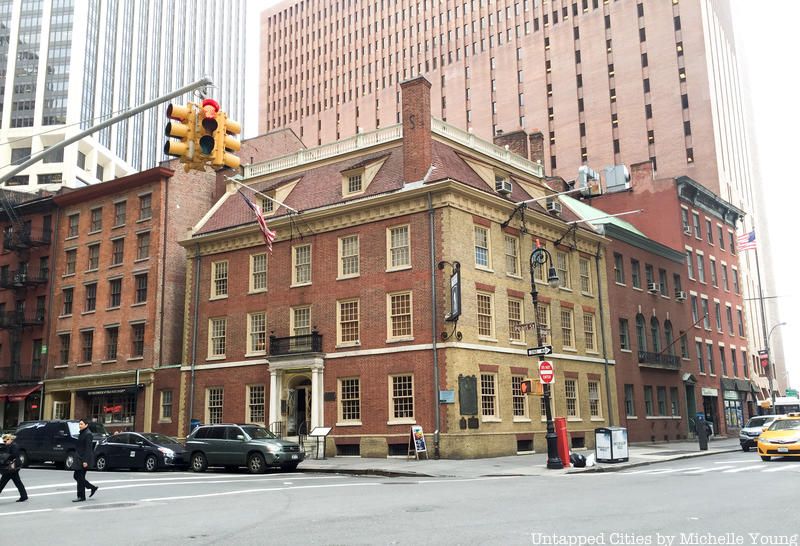
Fraunces Tavern is the setting for at least two songs, “Aaron Burr, Sir” and “My Shot.” There are additional songs that take place in taverns in the show Hamilton, though the bar name is not directly referenced in those. Most famous for being the location of George Washington‘s farewell address, Fraunces Tavern also hosted a meeting of The Society of the Cincinnati at least once in the early 1800s where Aaron Burr and Alexander Hamilton attended.
The building was destroyed by fires and rebuilt several times during the 19th century – the original design is unknown. The building passed between several owners and was finally scheduled for demolition in 1900. The Daughters of the American Revolution, among other groups, convinced the New York state government to designate the building as a park, thus saving the building until it was ultimately acquired by the Sons of the Revolution of New York in 1904. The building was “restored” soon thereafter, but without the original plans the restoration is thought to have involved substantial guesswork.
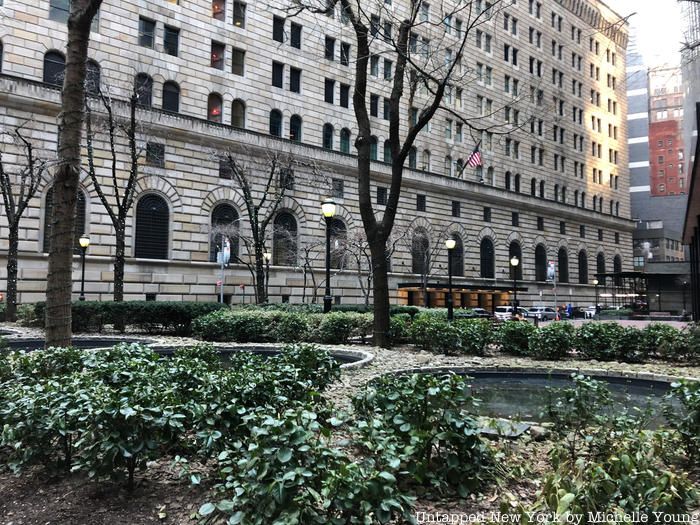 59 Maiden Lane plaza.
59 Maiden Lane plaza.
As sung in “The Room Where It Happens – Act II,” Thomas Jefferson arranged “the meeting…the venue, the menu, the seating” at his residence on Maiden Lane, where he, Alexander Hamilton and James Madison reached a compromise regarding Hamilton’s plan to have the federal government assume the debts of the individual states and the permanent location of the nation’s capital.
Today, you can visit the spot although the building is no longer there. There is a lovely plaza in front of 59 Maiden Lane (57 Maiden Lane no longer exists) where you can relax for a bit during your day, and don’t miss the plaque on the outer wall of the building (at the west end of the plaza) commemorating Jefferson’s former residence.
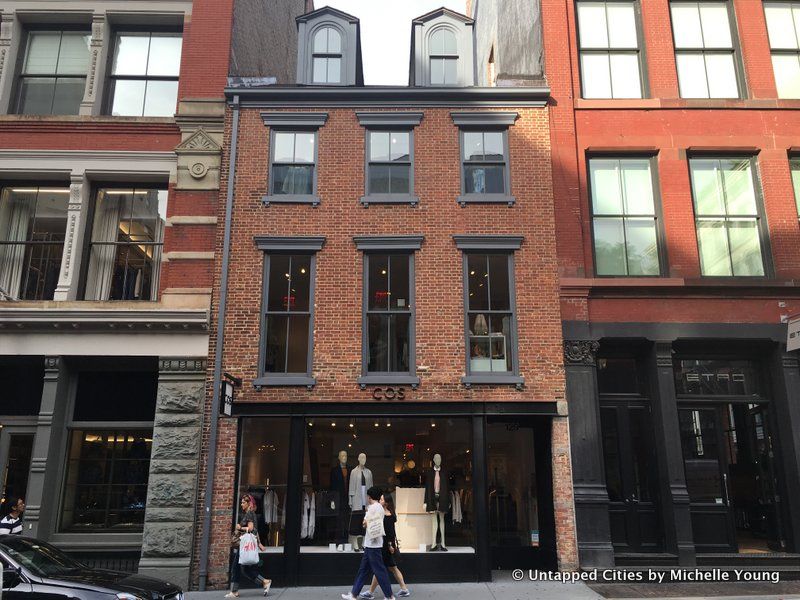
In the basement of the store is the 200+-year old “haunted” well involved in the Levi Weeks murder case (where Alexander Hamilton and Aaron Burr served as defense counsels for Weeks). The woman Weeks was accused of murdering was found in this well, and there have been reports of strange happenings around the well over the years.
The sepcific location is not in the musical, but the subsequent murder trial of Levi Weeks, who is defended by Hamilton and Burr, is mentioned in “Non Stop.” In the lower level of the store, the well is still there and can be seen by visitors, incongruously surrounded by clothing displays.
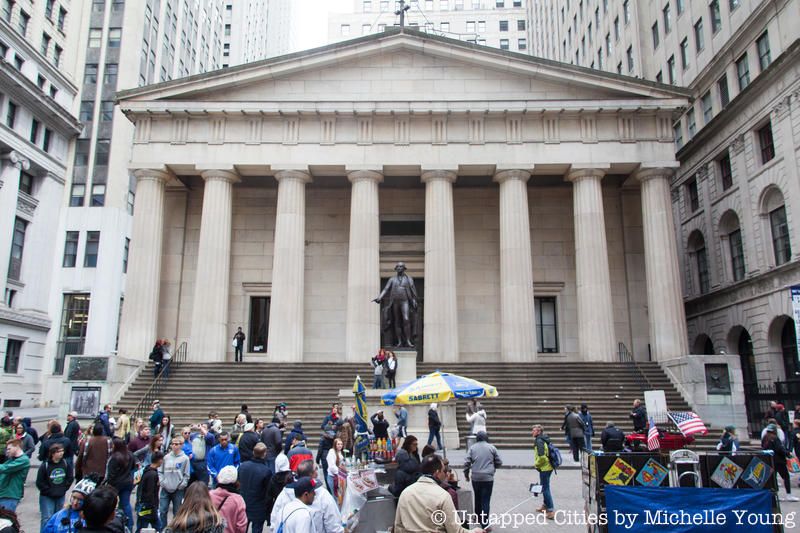
The murder trial of Levi Weeks, who was defended by Aaron Burr and Alexander Hamilton and which is mentioned in “Non-Stop,” was held in the original City Hall, now the site of Federal Hall. It was also the first U.S. Capitol Building and would have been the location for debates regarding Hamilton’s debt plan in Cabinet Battle #1, and the initial meeting between Thomas Jefferson and James Madison when Jefferson first arrived in New York in “What’d I Miss” could have happened here.
The original building was built in 1700 as New York’s City Hall and housed the Continental Congress following the American Revolution (1785-1789). The building was enlarged and renamed Federal Hall when it became the nation’s first Capitol under the new Constitution in 1789, and Congress held their initial meeting there on March 4, 1789. George Washington took his oath as the first U.S. president on the building’s balcony on April 30, 1789. After the government moved to Philadelphia in 1790, the building again housed the New York City government until it was razed in 1812.
The current structure was built in 1842 as the first Customs House. It was designated as Federal Hall National Memorial in 1939. Congress convened in the building in September 2002 (the first time since 1790) to show support for New York following 9/11.
Alexander Hamilton sings about getting a scholarship to King’s College in “My Shot,” and Philip Hamilton has just graduated from the college in “Blow Us All Away.” Though founded originally in Trinity Church, the location of King’s College that’s relevant to the musical was bordered by present-day West Broadway, Murray Street, Barclay Street and Church Street.
When the American Revolution began, the president was Myles Cooper (a royalist) – Cooper was threatened and ultimately chased back to England by a mob of patriots in May 1775. Hamilton held off the mob long enough for Cooper to escape by doing what he did best, launching into a speech (condemning the mob’s conduct).
The campus was used as a military hospital during the war, first by the Continental Army and then by the British after they seized New York in late 1776 (until they vacated the city in 1783). King’s College was renamed Columbia College in 1784 and renamed Columbia University in 1896 (From 1847 to 1897 the campus was located in Midtown from 49th and 50th Streets, between Madison and Park Avenue, the land was only sold to the Rockefellers in 1985!). Columbia moved to its upper Manhattan location in 1897.
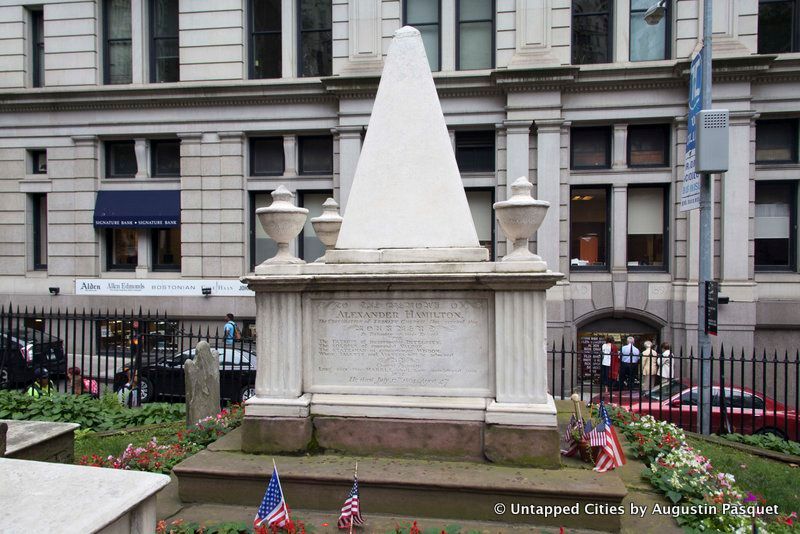
In “Who Lives, Who Dies, Who Tells Your Story,” Eliza Hamilton sings that her sister Angelica Schuyler Church is buried in Trinity Church near Alexander Hamilton. Eliza is also buried near Hamilton in Trinity Church. Hamilton’s grave also became a very popular tourist destination only following the debut of the show.
After his inauguration as President in 1789, George Washington prayed in St. Paul’s Chapel (members of the government, including Alexander Hamilton and John Jay, regularly worshipped here while the capital was in New York City). Hamilton’s funeral procession on July 14, 1804 ended at Trinity Church, where he was eulogized by Gouverneur Morris and laid to rest. The Trinity Church that stands today is the third iteration of the church, built in 1846.
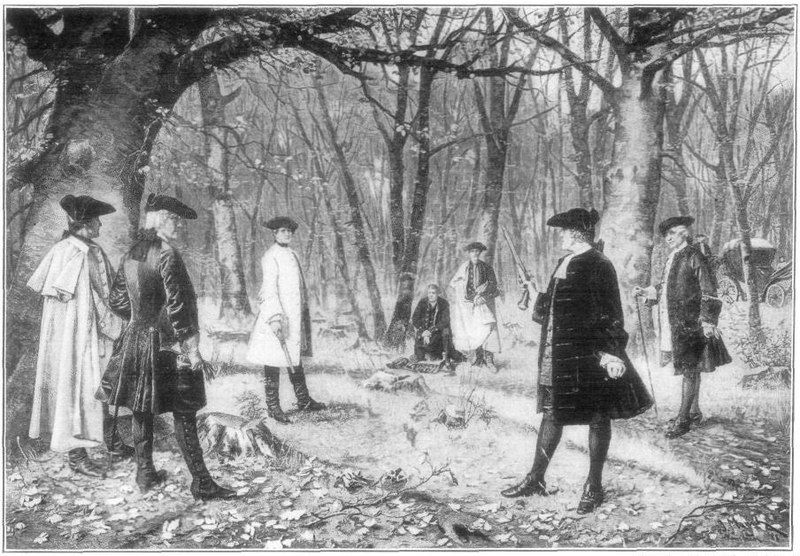
The fateful duel between Philip Hamilton and George Eacker happens in “Blow Us All Away.” Philip sings that he “was aiming for the sky” in recounting the duel to Alexander Hamilton in “Stay Alive (Reprise).” The duel between Aaron Burr and Alexander Hamilton, where Hamilton was mortally wounded, also occurs here in The World Was Wide Enough.
Today, you can visit Hamilton Park for an unobstructed view of the Manhattan skyline. You can also see the Hamilton Monument and plaques commemorating the Hamilton-Burr duel along Hamilton Avenue (just south of Hamilton Park). This is the same site where the earlier duel between Philip Hamilton and George I. Eacker took place in 1801. The pistols used in both these duels were located in the offices of J.P. Morgan Chase on Park Avenue, and had a brief appearance in Washington D.C. in an exhibition at the Postal Museum in 2016.
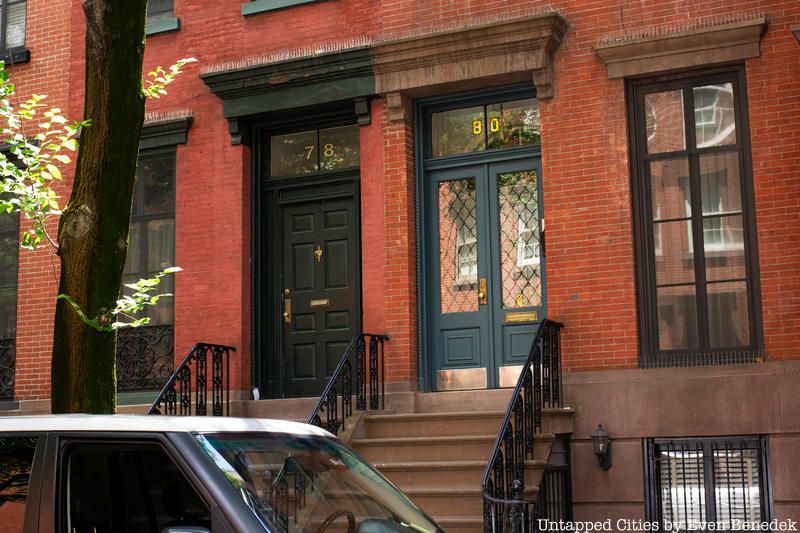 Bayard Mansion
Bayard Mansion
Alexander Hamilton was taken to the Bayard Mansion at 80-82 Jane Street after his duel with Aaron Burr, and Angelica Schuyler and Eliza Hamilton “were both by his side as he died” here, as sung in “The World Was Wide Enough.”
William Bayard, Jr. was a prominent New York City banker and a close friend of Alexander Hamilton (he was a Bank of New York director). After his duel with Aaron Burr the morning of July 11, 1804, Hamilton was rowed across the Hudson River to Bayard’s dock and taken into his home. As word of the duel and Hamilton’s mortal wound spread throughout the city, people congregated in front of Bayard’s mansion. Bulletins providing updates on Hamilton’s condition were circulated throughout the day.
The original building no longer stands but there is a plaque on the wall of the current building commemorating Hamilton’s death. Some say that Bayard’s mansion would have actually been located a block north of Jane Street, on present-day Horatio Street. What is known is that the fireplace mantle in front of which Hamilton died is now inside Gracie Mansion.

Aaron Burr met George Washington in Washington’s office at Richmond Hill during the American Revolution, and this meeting occurs in “Right Hand Man.” Richmond Hill was built on a 26-acre parcel of land just south of modern-day Greenwich Village and served as the residence/office of several of the major names of Revolutionary America. Burr later lived at Richmond Hill when he exchanged letters with Alexander Hamilton about their fateful duel as sung in Your Obedient Servant. Richmond Hill would have been located on present-day Varick Street, between Charlton Street and Vandam Street.
Burr was living at Richmond Hill at the time of his duel with Alexander Hamilton. The property was ultimately seized by Burr’s creditors and sold to John Jacob Astor, who developed the property into hundreds of individual lots (Burr actually mapped out the different lots during his ownership, but didn’t have the capital to develop them). The house itself was moved and saw several different uses over the years until it was finally demolished in 1849.
You can visit the neighborhood where Richmond Hill was once located (a portion of which has been designated a landmark and a historic district), but the house itself no longer exists.
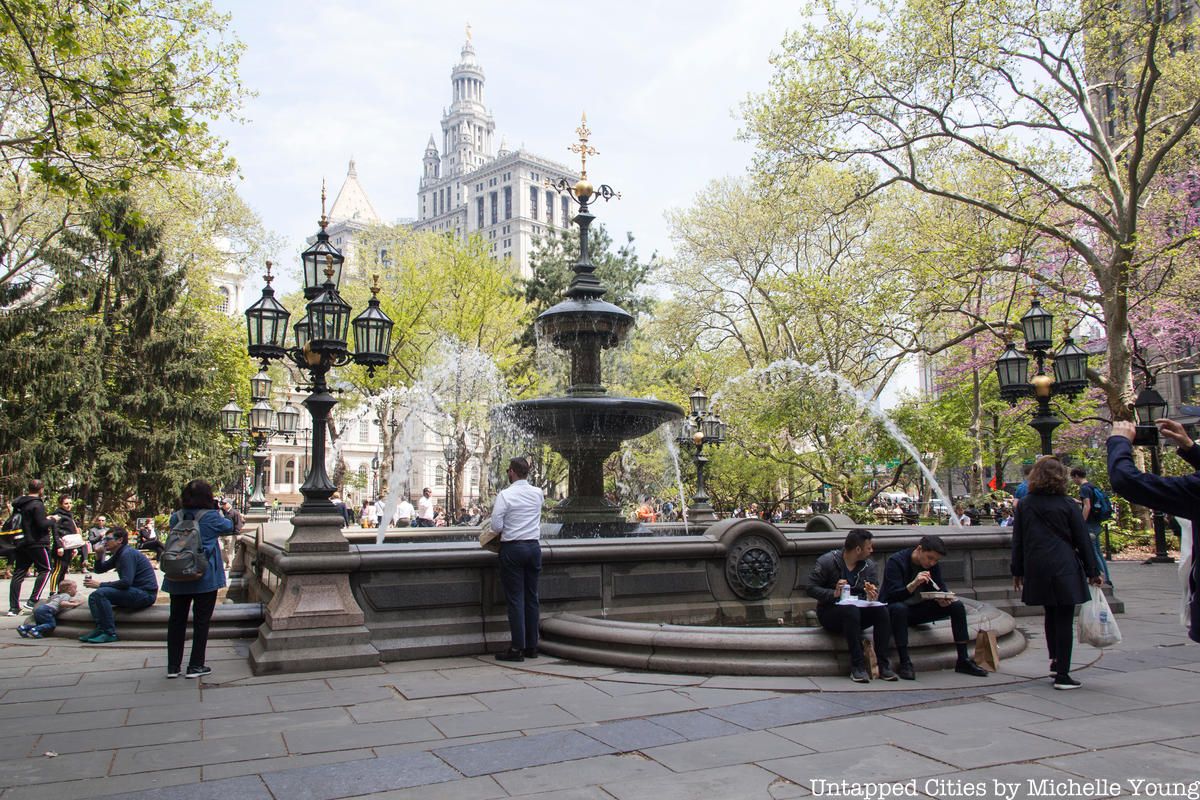
Angelica, Eliza and Peggy work it downtown in the Common in “The Schuyler Sisters,” and Alexander Hamilton takes on a pro- British speaker there in “Farmer Refuted.”
The park’s western boundary was a Native American trail that later became Broadway. In 1765, New Yorkers protested the Stamp Act at the site, and a year later the first “Liberty Pole,” a mast topped by a vane with the word “liberty,” was built at the site (a replica stands between City Hall and Broadway, near its original location).
The Common was the site of Alexander Hamilton’s first major public speech, at a meeting of the Sons of Liberty on July 6, 1774, where he spoke in support of the Boston Tea Party and a boycott of British goods. When Hamilton (with others) stole cannons from Ft. George in The Battery on August 23, 1775, they brought the cannons to the Common. On July 9, 1776, George Washington read the Declaration of Independence to a crowd at the Common.
Get the book Where Was the Room Where It Happened? The Unofficial Hamilton: An American Musical Location Guide
Subscribe to our newsletter